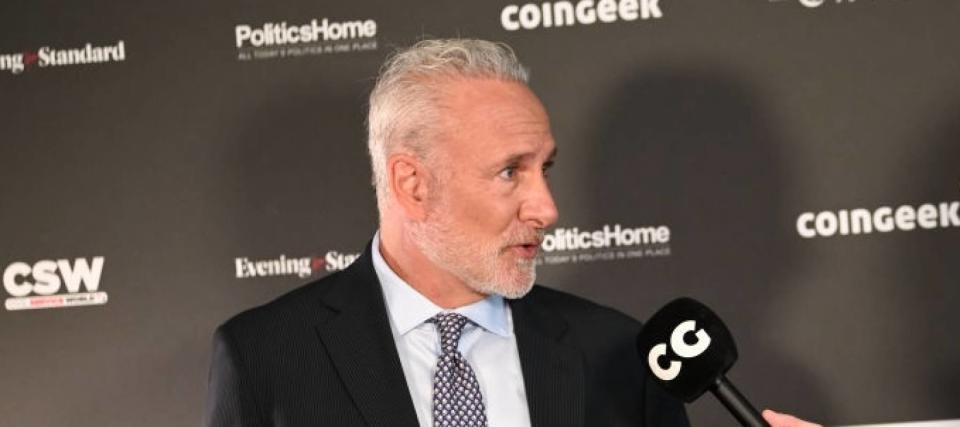
Since the U.S. Federal Reserve started initiating consistent interest rate hikes in March 2022 to combat inflation, investors have been grappling with two key questions: Will these measures effectively stabilize prices, and when might the Fed shift its strategy?
Recent developments provide clarity. At the Jackson Hole Economic Symposium last week, Federal Reserve Chair Jerome Powell remarked that “inflation has declined significantly” and indicated a change in course.
Don’t miss
-
Commercial real estate has beaten the stock market for 25 years — but only the super rich could buy in. Here’s how even ordinary investors can become the landlord of Walmart, Whole Foods or Kroger
-
Car insurance premiums in America are through the roof — and only getting worse. But 5 minutes could have you paying as little as $29/month
-
These 5 magic money moves will boost you up America’s net worth ladder in 2024 — and you can complete each step within minutes. Here’s how
“The time has come for policy to adjust,” Powell announced. “The direction of travel is clear, and the timing and pace of rate cuts will depend on incoming data, the evolving outlook and the balance of risks.”
From March 2022 through July 2023, the federal funds target rate range escalated from a mere 0% to 0.25% to a substantial 5.25% to 5.50%. While generally, lower interest rates could stimulate economic growth and buoy investors, skepticism remains.
Peter Schiff, chief economist and global strategist at Euro Pacific Asset Management, expresses significant concerns regarding the Fed’s forthcoming strategy shift. In a recent post on X, Schiff cautioned, “If you thought inflation was bad when the Fed claimed to be fighting it, wait until you see how much worse it gets now that the pretend fight is over.”
His concerns extend beyond inflation; Schiff also highlights looming risks for the U.S. dollar and the broader economy.
US dollar crisis?
Schiff looked at the U.S. dollar index, which measures the value of the greenback relative to a basket of foreign currencies, including the euro, Japanese yen, British pound, Canadian dollar, Swedish krona and Swiss franc.
The index was established in 1973 with a base value of 100, reached a high of 164 in 1985, and hit a low of around 70 in 2008.
Most recently, the index fell following Powell’s remarks suggesting a policy shift.
On Aug. 23, Schiff noted, “The Dollar Index closed at 100.67. The index could easily sink below 90 before year-end, challenging the 2020 low.”
This forecasted depreciation in the dollar could have broad implications. A weaker dollar generally makes U.S. exports cheaper and more competitive abroad, potentially boosting U.S. manufacturing and export sectors. However, it also makes imports more expensive, which can contribute to domestic inflation by increasing the cost of foreign goods and services.
Looking ahead, Schiff predicts this downward trend will persist into 2025, stating, “I think that low will be breached in 2025, triggering a U.S. dollar crisis, crashing the economy and sending consumer prices and long-term interest rates soaring.”
Schiff didn’t provide further details in that post, but a rapid decline in the dollar’s value could undermine international confidence in the U.S. currency as a store of value and medium of exchange. The resulting economic turbulence might also impact the U.S. economy by making it more expensive to service dollar-denominated debt, particularly for foreign borrowers.
Read more: Car insurance rates have spiked in the US to a stunning $2,150/year — but you can be smarter than that. Here’s how you can save yourself as much as $820 annually in minutes (it’s 100% free)
Fed’s mistake?
Schiff’s grim forecast for the U.S. dollar leads him to favor an alternative as a store of value: gold.
“Gold rose today to close above $2,500 for the 2nd consecutive week,” he noted in another post on Aug. 23. “Meanwhile, the U.S. Dollar Index sank to a 13-month low.”
He interprets this trend as evidence that the Federal Reserve’s policy shift is ill-advised. “This clearly confirms the Fed’s pivot is a mistake,” he argues.
Schiff has consistently maintained that the battle against inflation is far from over. With the Fed’s pivot signal, his conviction only deepens, anticipating further increases in prices. He predicts a continuing inverse relationship between the value of the U.S. dollar and gold, stating, “Higher inflation and lower rates mean the dollar goes through the floor as gold goes through the roof.”
Traditionally, gold is considered a safeguard against inflation, as it is a tangible asset not subject to the whims of monetary policy that can inflate the supply of fiat currency. The yellow metal has gained considerable investor attention recently, with its price soaring by 23% in 2024 compared to the year prior.
Schiff isn’t just theorizing; he’s investing according to his beliefs. The latest 13F filing from Euro Pacific Asset Management reveals a significant emphasis on the precious metal within Schiff’s investment strategy.
As of July 30, the largest holding at Euro Pacific Asset Management was gold mining company Agnico Eagle Mines (AEM). Meanwhile, Euro Pacific’s second-largest holding was Barrick Gold (ABX), another heavyweight player in the gold mining business.
For those aligned with Schiff’s outlook and considering gold as an addition to their investment portfolio, options abound. Investors can purchase gold bullion, own shares of gold mining companies, invest in gold ETFs and even tap into potential tax advantages through a gold IRA.
What to read next
This article provides information only and should not be construed as advice. It is provided without warranty of any kind.
EMEA Tribune is not involved in this news article, it is taken from our partners and or from the News Agencies. Copyright and Credit go to the News Agencies, email news@emeatribune.com Follow our WhatsApp verified Channel





